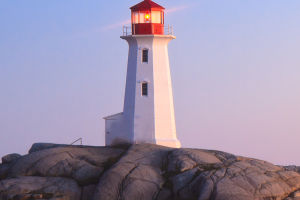Tsunoshima Lighthouse
Located on the picturesque Tsunoshima Island in Yamaguchi Prefecture, Japan, the Tsunoshima Lighthouse is a symbol of maritime history and a marvel of scenic beauty.
Surrounded by the azure waters of the Sea of Japan, this iconic lighthouse stands as a gateway to breathtaking coastal landscapes, offering visitors a mix of tranquility and awe.
How to Get to Tsunoshima Lighthouse
By Car
The lighthouse is accessible by car via the Tsunoshima Bridge. It’s about a 2-hour drive from Yamaguchi City or a 1-hour drive from Shimonoseki City. Parking near the lighthouse is free.
By Public Transport
Take a train to Kottoi Station on the JR San’in Main Line, then catch a local bus to Tsunoshima. From the bus stop, it’s a short walk to the lighthouse.
Why Tsunoshima Lighthouse is a Must-Visit
A Historical Landmark
Built in 1876 by Scottish engineer Richard Henry Brunton, the Tsunoshima Lighthouse is one of Japan’s oldest Western-style lighthouses. It was constructed with high-quality granite and has been guiding ships safely for over a century.
Stunning Panoramic Views
The lighthouse offers stunning views of the vast ocean, rugged coastline, and the famous Tsunoshima Bridge, a scenic marvel in itself. The turquoise waters below and the dramatic skies above make it a haven for photographers and nature lovers.
Secluded and Serene
Unlike crowded tourist spots, Tsunoshima Lighthouse offers a peaceful retreat where you can connect with nature and take in the beauty of Japan's coastline.
What to Do at Tsunoshima Lighthouse
Climb to the Top
Visitors can climb the spiral staircase inside the lighthouse for a small fee (around $2–$3 USD). The view from the top is nothing short of mesmerizing, with the endless expanse of the ocean meeting the horizon.
Explore the Lighthouse Grounds
The area around the lighthouse features well-maintained paths, lush greenery, and seating spots, perfect for a leisurely stroll or a picnic.
Visit Tsunoshima Bridge
Don’t miss the chance to cross the Tsunoshima Bridge, which connects the island to the mainland. The 1,780-meter-long bridge offers postcard-perfect views of the sea.
Best Time to Visit
Spring (March–May): The island comes alive with blooming flowers and pleasant weather.
Autumn (September–November): Enjoy clear skies and cool breezes, making it ideal for sightseeing.
Accommodation Options Near Tsunoshima
Cozy Inns
Stay in traditional Japanese inns (ryokans) on the island or nearby towns. Prices range from $50–$120 USD per night, depending on amenities.
Beachside Hotels
Modern hotels along the coast offer stunning sea views and comfortable amenities, with rates starting at $70–$150 USD per night.
Dining Options
Seafood Delights
Enjoy freshly caught seafood dishes like grilled fish, sashimi, and octopus tempura at local restaurants. A meal typically costs $10–$20 USD.
Casual Cafés
Cozy up at seaside cafés offering coffee, pastries, and light snacks, perfect for a quick bite while enjoying the view.
The Tsunoshima Lighthouse isn’t just a beacon for ships—it’s a symbol of tranquility, history, and natural beauty. From the breathtaking views of the sea and the iconic Tsunoshima Bridge to the peaceful ambiance surrounding it, the lighthouse offers a memorable escape from the hustle of daily life. So, Lykkers, pack your bags and let this coastal wonder take your breath away!


